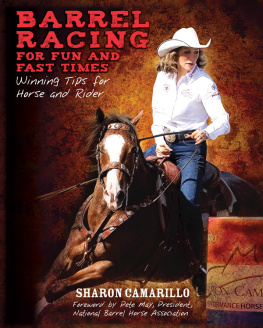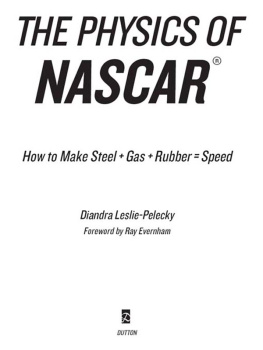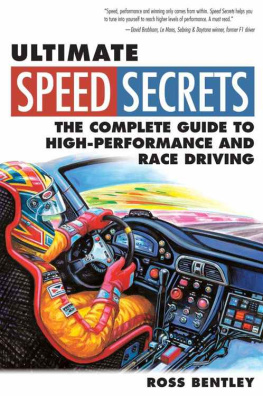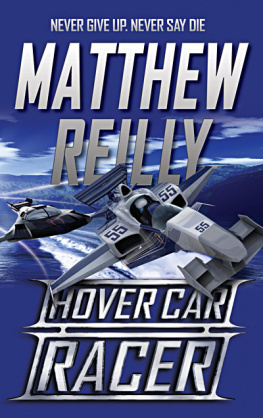Fast Car Physics
Fast Car Physics
CHUCK EDMONDSON

2011 The Johns Hopkins University Press
All rights reserved. Published 2011
Printed in the United States of America on acid-free paper
2 4 6 8 9 7 5 3
The Johns Hopkins University Press
2715 North Charles Street
Baltimore, Maryland 21218-4363
www.press.jhu.edu
Library of Congress Cataloging-in-Publication Data
Edmondson, Chuck.
Fast car physics / Chuck Edmondson.
p. cm.
Includes bibliographical references and index.
ISBN-13: 978-0-8018-9822-8 (hardcover : alk. paper)
ISBN-10: 0-8018-9822-6 (hardcover : alk. paper)
ISBN-13: 978-0-8018-9823-5 (pbk. : alk. paper)
ISBN-10: 0-8018-9823-4 (pbk. : alk. paper)
1. AutomobilesDynamics. 2. AutomobilesEquipment and supplies. 3. AutomobilesDesign and construction. 4. Physics. I. Title.
TL243.E36 2011
629.231dc22 2010017554
A catalog record for this book is available from the British Library.
Special discounts are available for bulk purchases of this book. For more information, please contact Special Sales at 410-516-6936 or specialsales@press.jhu.edu.
The Johns Hopkins University Press uses environmentally friendly book materials, including recycled text paper that is composed of at least 30 percent post-consumer waste, whenever possible.
Contents
Chapter 1
Torque or Horsepower? Finding the Shift Points
Chapter 2
Horsepower, 0 to 60 mph, and the Quarter Mile
Chapter 3
Finding the Racing Line: Road Racing
Chapter 4
Basic Vehicle Dynamics: Load Transfer and Tires
Chapter 5
Steering and Suspension
Chapter 6
Green Racing
Conclusion
Get Off the Streets and Go Racing!
Preface
Before I can pull the retractable ladder down from the ceiling of my garage and retrieve our Christmas decorations from the attic, I have to move a stack of tires. I sit and stare at two full sets of wheels and five sets of tires and wonder, how did this happen? Between the tools and tires, there is no room for the car and its too cold outside for banging knuckles. The season opener is three months away and I would rather tinker with the car than hang decorations. I would rather plan the next car modification than work on the list of chores that I postponed over the course of last racing season. The Sports Car Club of America (SCCA) calls my addiction solo racing. Everywhere else, its called autocross. When the weather is nice and the opportunity presents itself, this is the way my family spends much of its free time.
I have always been a car nut. As a kid, I drove 500 miles to watch Mark Donahue beat Richard Petty in the first season of the International Race of Champions. As much as I would have loved to follow in Donahues path, school, work, family, and a modest income limited my racing activities to observing. When my son reached driving age and racked up his first few speeding tickets, I knew he needed a way to get the urge to drive fast out of his system, and autocross fit the bill. It is fast, safe, exciting, and broken into classes to make everyone competitive. Its hard to beat the thrill of racing your daily driver flat out. At first, it was only my son pushing his 1990 Honda CRX Si to the limit. When I finally reached the point where I could afford a Nissan 350Z, I could no longer pass up the temptation. I had a blast. Somewhere around the 220,000-mile point, the CRX gave up the ghost, and my son and I co-drove the Nissan for a season. Soon, my daughter joined the act. Every successful team needs a patient and generous sponsor to provide support and cash for new parts. Ours can be found smiling trackside and in the pits. She also doubles as my wife.

The Team Pacos Parts House 350Z out on the autocross track. Photograph by Clyde Caplan and Alex Teitelbaum.
When I started autocrossing, I ran in the B stock class and, to be honest, wasnt exactly winning my class. To add insult to injury, the SCCA uses a handicap system called the PAX index, and it allows comparison of the various classes. It is based on the relative speeds at national events in each class. At the end of the day, all 200 or so cars that race in my region are ranked in order. Although I did not expect to win, I didnt expect to be thrashed. I dont take thrashing well, and I dont like to quit. I needed to fix my driving and to learn how to set up my car. This doesnt happen overnight. It takes experience and understanding. It turns out that a little money is useful as well. A year and a half later, I managed a finish of 29th place out of 122. I won my class that day and just edged out a BMW M3 for the season class championship. It was a small class in a small club, but it was a sweet victory nonetheless. My car was co-driven by one of the top drivers in the region and, by raw times, only three cars were faster. He was 0.4 seconds behind the fastest time of the day (FTD). Progress is possible.
Automotive advice fills the Internet and the library, much of it qualitative, some of it wrong. The quantitative stuff written by engineers is often intended for other purposes. As a physics professor and a former Navy nuclear engineer, I needed something more. I set about the process of trying to understand racing from the perspective of physics. My new hobby soon became a one-credit seminar, and then two, and finally a three-credit undergraduate course. This book is a compilation of much of what I learned along the way. It explains racing in terms of basic physics. Most of the physics is directed at the high school and college freshmen level. If you hate all forms of mathematics, this is not your text. If you can use a little algebra and trigonometry, youll be just fine. If you can run a spreadsheet program, you can even apply the most complex ideas to any car of your choosing. Ill highlight the ideas and conclusions that you can apply to your own car. Hopefully, by the time we are done youll understand what happened to my garage.
Acknowledgments
Many people have made this text and my time behind the wheel possible. I owe them all a sincere debt of gratitude. First and foremost, I would like to thank the owner and my co-drivers at Team Pacos Parts House. The owner is the love of my life and my wife JoAnne. My co-drivers are my son Tristan and daughter Brittany. With the three of them at my side, every day of racing and driving is a joy. My folks, George and Mary Edmondson, put up with many years of racing magazines and car repairs. My Dad taught me how to turn a wrench, a necessary skill for any racer that isnt independently wealthy. I owe my family a great deal.
Clyde Caplan and Alex Teitelbaum generously supplied the photos in this text. They are photographers and de facto historians of Team WTF?!
The men and women of the Washington DC Region of the Sports Car Club of America are a wonderful group. Their solo program (autocross) is one of the top in the nation. I have also had the privilege of serving on the organizing committee of the DC Region Time Trials and Performance Driving Experience (PDX). I have learned from these two programs how to engage in safe and fun high-performance driving. Friendly, open, and ready to help, they are simply a great group. The region club racers, flaggers, stewards, and other officials volunteer to make the PDX program possible. I am also a member of Autocrossers Incorporated, one of the premier autocross clubs in the country. As a member, I have had the privilege of working with, watching, and learning from some of the best drivers that I have known. I am proud to call them my friends.
Next page






